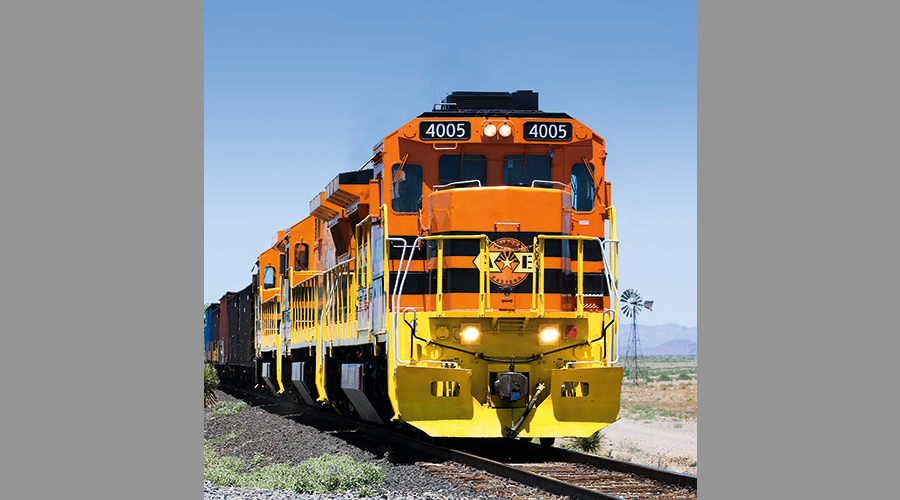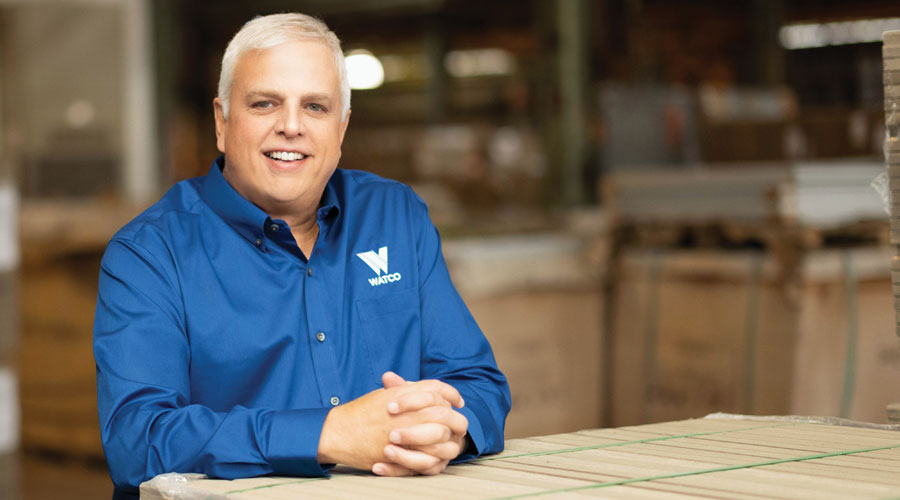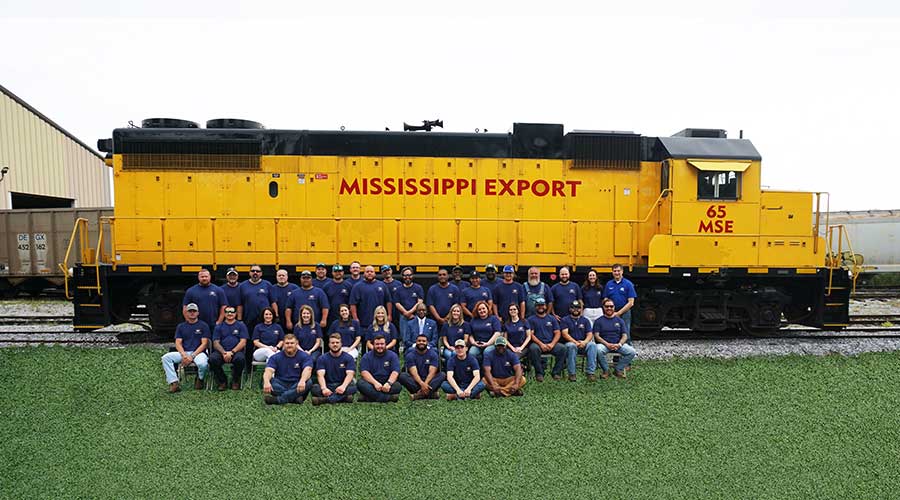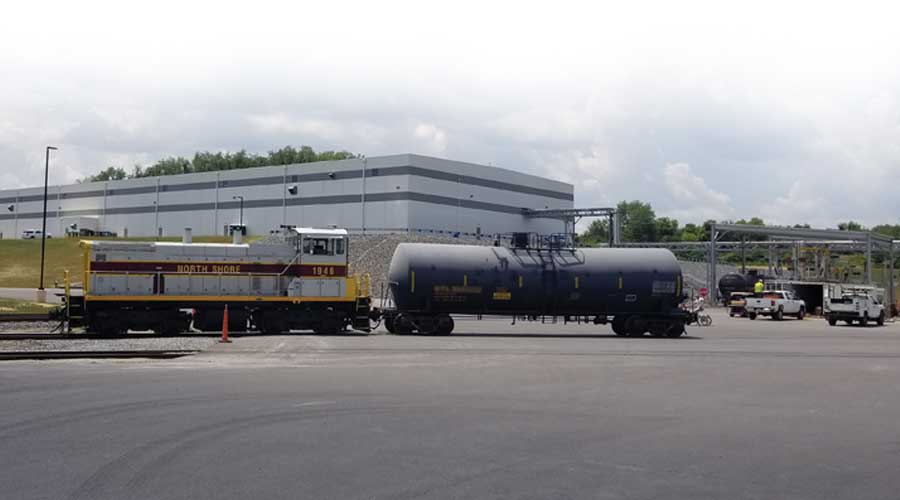Stay updated on news, articles and information for the rail industry
July 2010
Rail News: Short Lines & Regionals
A short-line story: Indiana Rail Road's Tom Hoback
By Jeff Stagl, Managing Editor
Indiana Rail Road Co. (INRD) President and Chief Executive Officer Tom Hoback has long believed that if you run a railroad like a business, you can be successful.
It's turned out to be a winning philosophy for Hoback since he founded INRD in 1986, one that helped him take a railroad slated for abandonment and increase traffic more than tenfold. He's tried to parlay a strong business mentality and challenge-yourself attitude into carload and revenue growth, efforts that helped transform INRD from a Class III (generating less than $20 million in annual revenue) to a Class II (registering revenue between $20 million and $280 million) in 15 years.
Hoback, 63, also brokered a deal with Canadian Pacific four years ago that expanded INRD's trackage from 155 miles to more than 500 miles and "truly placed the railroad among the ranks of regionals," as he characterizes it. The transaction enabled INRD to offer its scheduled railroad and other services to shippers in additional cities, such as Terre Haute, Ind.
Now, the regional's annual carloads — which numbered about 15,000 in 1986 — continue to climb toward the 200,000 mark.
"We've proven we can provide a high level of service and be extremely successful," says Hoback.
Hoback had envisioned a thriving regional railroad back in the early 1980s, when he led a group of investors to acquire a line between Indianapolis and Sullivan, Ind., from the Illinois Central Railroad. The route had dilapidated track, but it also offered access to a major metropolitan area, several coal mines and multiple connecting railroads, says Hoback. Recognizing the line's coal-hauling potential, he formed INRD and began chasing his dream.
During the past 24 years, Hoback has strived to cultivate markets and shipper relationships without overextending capacity. Although two costly derailments caused by broken rails nearly led to INRD's demise in 1987, he's also tried to fund infrastructure and motive-power upgrades — expenditures projected to exceed $100 million between 1986 and 2010 — without strapping finances.
Another of his ongoing missions: ensuring INRD is at the forefront of emerging rail industry trends, such as one-person crews and transloading.
Hoback's "energy and creativity" have helped make INRD "one of the most successful and widely respected railroads in our industry," says American Short Line and Regional Railroad Association President Richard Timmons.
"Tom was one of the first of the new breed of short-line owners who took root after the Staggers Act of 1980, and has been a leader on such issues as remote-control technology," says Timmons.
Bent on Raising the Bar
Although INRD has achieved most of Hoback's goals — it's taken longer than expected to capitalize on certain southern Indiana coal reserves — he doesn't want the railroad to rest on its laurels. He plans to boost revenue 50 percent during the next five years and diversify traffic beyond mainstay coal. In 1986, 92 percent of INRD's revenue was generated by coal; today, energy traffic (including coal, coke, petroleum coke and ethanol) still accounts for three-quarters of the railroad's business.
"We see several diversification opportunities, such as intermodal and municipal solid waste," says Hoback.
Hoback has been a proponent of setting and attaining ambitious goals since he left his Peoria, Ill., home to attend college in the mid-1960s. Growing up in a family of railroaders, Hoback knew at an early age that he wanted to pursue a railroading career. To get started, he sought a university that offered a premier transportation program to learn about the entire transportation chain.
Hoback chose Golden Gate University in San Francisco because the city was a major transportation hub and the furthest away he could travel from home on a rail pass from his father, a Santa Fe Railway dispatcher.
After he earned a Bachelor of Science degree in transportation and economics, he was eager to enter the rail industry.
"But I wanted to start with my own canvas," says Hoback.
He began to paint broad brush strokes after college as a traffic manager for food and pharmaceuticals distributor Foremost-McKesson, then as an economic analyst for Western Pacific Railroad.
A later role in Western Pacific's pricing department provided knowledge of setting rates in a regulated industry, while a stint as Illinois Central's director of coal marketing provided exposure to southern Indiana coal shippers and post at Tampa Electric Co. presented an opportunity to retool the utility's coal transportation system.
First Time Not the Charm
Although his railroading/transportation career was blossoming, Hoback maintained a strong desire to start and run a railroad "on his own nickel," he says. An opportunity arose in the late 1970s, when Hoback and several investors acquired a lease on a former Erie Lackawanna line between Chicago and Lima, Ohio. Hoback formed the Erie Western Railroad to operate the state of Indiana-owned line and soon began to generate more traffic, including trailer-on-flat-car moves with the Santa Fe. However the state ended a designated operator program 18 months later and decided to liquidate the line because of a high net salvage value.
After gaining his first hands-on experience as a short-line operator, Hoback spent the latter part of the '70s searching for a second opportunity.
He found it with the Illinois Central (IC) line and INRD. The line already served one Indianapolis Power & Light coal plant and was positioned to serve two others.
"I saw an opportunity to move more coal down the road — not clean coal, but coal that suits needs in Indiana," says Hoback.
He sold his home and borrowed money to fund his purchase share. To get INRD up and running, Hoback relied on expertise from a few close business associates. One of the IC line's investors, Rich Lassar, provided financial advice.
"He was a confident and smart financial guy, and a critical thinker," says Hoback.
In addition, Harold Meeker — a civil engineer and long-time Western Pacific employee who at one time was the railroad's No. 2 operating executive — was the point person for performing bridge inspections along INRD's line.
A light-density line expert, Meeker also helped develop a plan to slowly rebuild INRD's infrastructure, which was badly in need of repairs, says Hoback.
Meanwhile, Hoback remained focused on traffic generation — an effort that received a big boost in 2006 with the CP deal. INRD acquired a 92-mile line between Fayette and Bedford, Ind., from the Class I, and obtained trackage rights over a CSX Transportation line from Chicago to Terre Haute, and Bedford to Louisville, Ky.
INRD already interchanged with CP, CSXT, CN, Norfolk Southern Railway, Indiana Southern Railroad, Central Railroad Co. of Indiana and Louisville & Indiana Railroad Co., and the transaction provided connections to BNSF Railway Co. and Union Pacific Railroad in Chicago, and Paducah & Louisville Railway in Louisville. In addition, the deal enabled INRD to transform CP's former Latta Yard in Jasonville, Ind., into its own major hub.
"We saw opportunities to originate and terminate freight," says Hoback.
A Run at More Coal
Another landmark deal with traffic-generating potential occurred last year. INRD worked out a pact with Peabody Energy to exclusively serve its new Bear Run coal mine in Sullivan County, Ind. The more than $400 million surface mine is "one of the most significant industrial developments in Indiana in this decade," says Hoback.
The regional spent $17 million to build a 5.2-mile industrial spur and loop track to link Peabody's coal load-out facility to an east-west INRD line. (To view a video of Hoback describing the project's history and significance, log onto ProgressiveRailroading.com and click on the "multimedia" application.)
The project — the costliest in INRD's history — was completed two months ago and the regional began moving 135-car trains from the mine at May's end.
"There's talk of some of this coal going to Florida," says Hoback, adding that INRD would work with CSXT to develop such a move.
Ultimately, the additional Peabody business will boost INRD's coal volume 30 percent, he says.
Currently, INRD hauls about 170,000 carloads annually. In addition to coal, commodities range from chemicals and petroleum products to lumber to plastics to grain and grain products.
There are many more carloads in INRD's future, Hoback believes, and a lot more revenue opportunities to tap, as well. But looking back, he acknowledges the ground his railroad already has gained.
"We took a broken-down short line and made it into, literally, a heavy-haul railroad," says Hoback.
Keywords
Browse articles on Indiana Rail Road Tom HobackContact Progressive Railroading editorial staff.


 2025 MOW Spending Report: Passenger-rail programs
2025 MOW Spending Report: Passenger-rail programs
 Gardner steps down as Amtrak CEO
Gardner steps down as Amtrak CEO
 Guest comment: Oliver Wyman’s David Hunt
Guest comment: Oliver Wyman’s David Hunt
 Women of Influence in Rail eBook
Women of Influence in Rail eBook
 railPrime
railPrime








